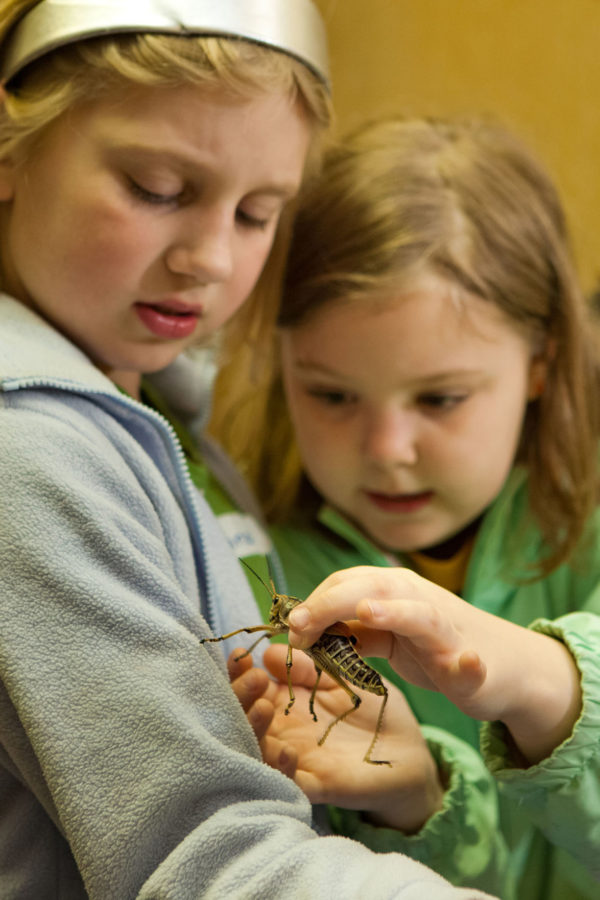A sustainable gem: The sixth Naturally Illinois Expo
Two students examine an insect from one of the entomology exhibits at the Naturally Illinois Expo in 2013.
Apr 16, 2015
A short walk away from the State Farm Center, nestled among other buildings in Research Park, is the Forbes Natural History Building, one of “the University’s best kept secrets,” said Sue Post, chairperson of the Naturally Illinois Expo.
However, with the arrival of around 800 students from schools in the Champaign-Urbana area on Friday for the expo, one could suppose the secret is out.
The Naturally Illinois Expo serves as a way to educate students on the preservation of resources while also showcasing the work done at the Prairie Research Institute to the general public.
The institute is holding its sixth annual expo on Friday from 9 a.m. to 3 p.m. and Saturday from 10 a.m. to 3 p.m. Admission is free at both the Forbes Natural History Building at 1816 S. Oak St., as well as the Illinois Sustainable Technology Center at 1 E. Hazelwood Dr.
One of the main changes was holding the event on a different day in order to let it stand out, Post said. She explained that in previous years, the expo was held in conjunction with the ACES Open House and Engineering Open House.
Get The Daily Illini in your inbox!
This year, the expo is home to 60 exhibits, with the ISTC housing those with a focus on sustainability. This year features the Natural History Survey’s collection of fossilized insects in amber, which explores biodiversity; the return of the 400-gallon fish tank, which demonstrates native and invasive species in Illinois and an interactive display on the Mahomet Aquifer.
In addition, there will be an exhibit about zero waste in industry and on campus, which will illustrate how the institute is trying to increase compost and recycling efforts.
As part of a competition, the institute will urge students to reduce waste as much as possible for the event, said Bart Bartels, a technical assistance engineer for the Illinois Sustainable Technology Center. Bartels said he hopes this pushes students to think of the way they use resources more critically.
“We’re trying to engage students from the moment they get here to try to think about the waste they’re creating,” Bartels said. “So we’re trying to… move away from the linear process that we now have, where we’re stripping minerals, using them to manufacture and immediately dumping. We just want to close that loop a little bit and continue to reuse what’s already in the system.”
As well as notifying teachers of the zero-waste initiative, there will be stations throughout the event that allow students to divide up what goes into compost, recycling and landfills. This set-up allows students to see the impact they’re making on the environment almost instantaneously and can lead to students becoming more involved in conservation, Bartels said.
“For energy conservation, sometimes it’s difficult to see the impact from it — the coal that wasn’t burned. But with waste, (students) can immediately see the impact, immediately see what didn’t go to landfill and what went to a recycling bin,” Bartels said.
Although the expo aims to show students how they can help the environment and how the institute works, they also explore careers that promote sustainability. ISTC Research Specialist Beth Meschewski has been working on an interactive display that allows students to see how they “can make any career they’re interested in a green career, so that we can have a sustainable future.”
Despite having over 100 scientists present during the two days, the interactive exhibit provides students with an opportunity to see how sustainability can be involved in any career, said Nancy Holm, assistant director for ISTC’s sponsored research, public engagement and communications.
“There might be other jobs that aren’t directly research related,” Holm said. “This is one way to see science careers.”






